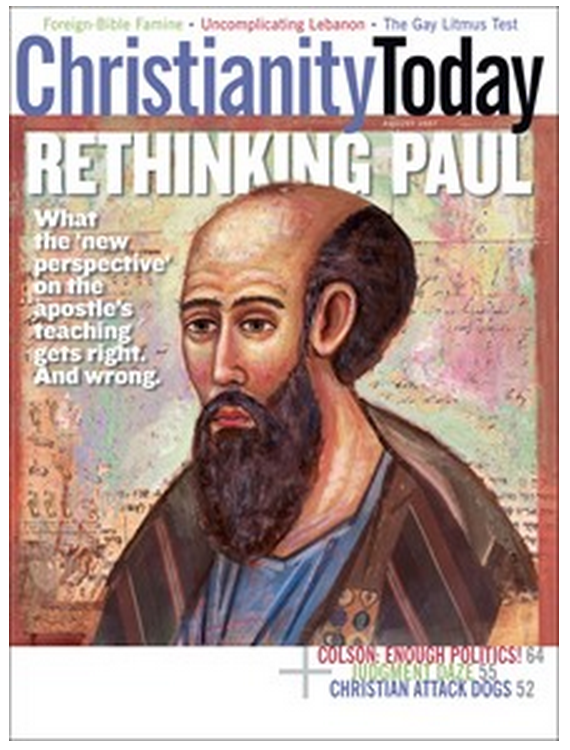Some of the problems with the article per se are not the direct fault of the author. For example, when the caption to a drawing of Beza, Luther and Calvin on p. 24 refers to those three as “Old School” and states that they “found in Scripture a doctrine of justification different from what the medieval Catholic church taught,” the apparent implication is that the three facing figures (new perspectivists James D. G. Dunn,[3] N. T. Wright and E. P. Sanders) found something else there. Whoever penned the caption apparently concluded from what Gathercole wrote that new perspectivists must think that Scripture teaches a doctrine of justification similar to that of the medieval Catholic church! (They, of course, do not think that.) The author of the article is not nearly as misinformed as the writer of the caption, but his discussion of the new perspective still leaves a lot to be desired, and it is not surprising that misunderstandings as great as that in the caption should be the result.
Premium Members and Friends of JP must be signed in to view this content.
If you are not a Premium Member or Friend, please consider registering. Prices start at $5/month if paid annually, with other options for monthly and quarterly and more: Sign Up For Premium
- [1] I owe this point to Dr. James McGrath of Butler University, who made it on his weblog in the days following the publication of Gathercole’s article (see at http://exploringourmatrix.blogspot.com/2007/08/new-persepctive-on-paul.html). I wish to thank Dr. McGrath for reading and commenting on this article. ↩
- [2] Simon Gathercole, “What Did Paul Really Mean?,” Christianity Today (August 2007): 22-28. The editorial introduction to the article tries to make it appear that Gathercole is an objective third-party observer of the fight between the NPP and its opponents, but in reality Gathercole has been a vocal critic of the NPP, setting out to refute it even in his doctoral dissertation. ↩
- [3] There is something really strange about the drawing: the depiction of Dunn is so completely wrong that the artist must have used a photograph of someone else. ↩



